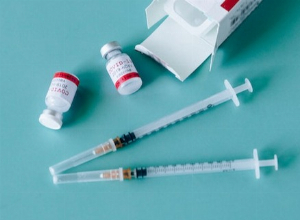Thrombotic Thrombocytopenic Purpura (TTP) and pregnancy: everything you need to know!
Published Dec 23, 2022 • By Nada Doukkali
Nowadays, thanks to medical progress, it is possible for patients with chronic diseases to prepare for pregnancy and get pregnant. Although these pregnancies are sometimes subject to special arrangements, they are becoming more and more acceptable to the mothers-to-be.
How are pregnancies in patients with Thrombotic Thrombocytopenic Purpura (TTP) monitored?
We explain it all in our article!

Thrombotic Thrombocytopenic Purpura (TTP): what is it?
Thrombotic Thrombocytopenic Purpura (TTP) is a rare blood condition.
Thrombotic Thrombocytopenic Purpura (TTP) is a member of the family of Thrombotic Microangiopathies, a group of conditions in which small platelet clots block small blood vessels and cause low platelet count in the bloodstream. TTP can occur in two forms:
- Congenital: the disease is due to a genetic defect, which prevents the synthesis of a protein called ADAMTS13, and which causes the rest of the symptoms. This form of the disease is hereditary.
- Auto-immune: the disease is due to the fact that the patient's body creates autoantibodies which induce the destruction of the ADAMTS13 protein
Is it possible to plan a pregnancy when suffering with Thrombotic Thrombocytopenic Purpura (TTP)?
It is perfectly possible to plan a pregnancy when you have TTP. The pregnancy itself in this case is considered normal.
In addition, patients with this condition are not considered any less fertile than the rest of the population.
Are there any risks in getting pregnant while being affected with Thrombotic Thrombocytopenic Purpura (TTP)?
Pregnancy is a risk factor for a relapse of the disease. It is therefore necessary to apply certain precautions. First of all, it is strongly recommended that any pregnancy is planned, if possible, with a multidisciplinary team including, among others, the patient's GP, her specialist doctor and her gynaecologist. It is this team that will decide, on a case-by-case basis, on the various steps to be taken in monitoring the disease.
To avoid any risk for the mother, it is important to monitor certain biological constants, in particular the platelet level. Thus, regular examinations should also be planned.
In TTP, the activity of the ADAMTS13 protein should be monitored regularly. It is important that the level of this protein is stable in order to avoid a relapse.
For this reason, in patients with congenital TTP, regular plasma transfusions can be planned for during the entire pregnancy, from conception to the postpartum period, in case of a significant deficit.
For autoimmune TTP, the use of certain immunosuppressive drugs, such as rituximab, may be considered, in agreement with the medical team, and depending on the benefit it may bring to the patient.
Studies show that regular management and monitoring of platelet levels and ADAMTS13 activity leads to much better management of the pregnancy, and reduces significantly the number of relapses.
Can I continue taking my medication during pregnancy?
Most treatments for TTP can be prescribed during pregnancy.
There are no contraindications to taking immunoglobulins or having plasma infusions during pregnancy.
The use of immunosuppressants and corticosteroids, which are drugs that act on the immune system, should be discussed with the doctors: it will depend on the patient and the benefit of taking these treatments.
In any case, each medication must be reviewed on a case-by-case basis by a doctor as soon as pregnancy occurs.
Can I transfer my condition to my child?
Congenital TTP is a hereditary disease, i.e. it is passed on to the patient's offspring. It is an autosomal recessive disease: both parents must carry the gene of the condition for the child to have a 25% chance of developing it.
Although these diseases are not genetic, in autoimmune TTP there may be a risk of thrombocytopenia (low platelet count) for the baby at the time of birth, due to the mother's antibodies passing through the placenta, but this thrombocytopenia is always short-lived, and passes in the first few months of life. Moreover, the risks of complications for the unborn child are very rare.
It is the presence of these risks that necessitates certain examinations of the newborn, including a test of the platelet level in the umbilical cord and a blood test performed on the infant within 5 days of birth. In the case of TTP, the activity of the ADAMTS13 protein can also be checked.
Are there any specific recommendations concerning giving birth?
The risk of severe bleeding is no greater during pregnancy than during the rest of the life of patients with TTP .
Although there is a greater risk of haemorrhage during delivery, it is mitigated by a specific treatment given at the end of pregnancy and aimed at restoring a "protective" platelet threshold. It is desirable that this threshold is reached if the patient wishes to receive an epidural anaesthetic.
Was this article helpful to you?
Give it a like and share your thoughts and questions with the community in the comments below!
Take care!
Sources :
MSD Manuals : Purpura Thrombotique Thrombocytopénique
Prise en charge préemptive des femmes enceintes atteintes de PTT : étude - Néphrologie et Thérapeutique
Protocole National de Diagnostic et de Soins : Purpura Thrombotique Thrombocytopénique - HAS
Protocole National de Diagnostic et de Soins : Purpura Thrombocytopénique Immunologique - HAS
Protocole Thrombopénies et Grossesse - CHU Martinique MFME
Thrombotic Thrombocytopenic Purpurea and pregnancy : presentation, management, and subsequent pregnancy outcome - American Society of Hematology
Microangiopathies thrombotiques - MaRIH
Le PTI en 100 questions - MaRIH
Fiche Purpura Thrombotique Thrombocytopénique - Orphanet
Pregnancy complications in acquired Thrombotic Thrombocytopenic Purpura: a case-control study

 Facebook
Facebook Twitter
Twitter


